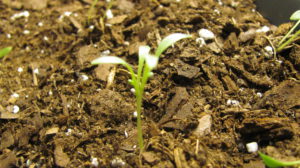Steps to Growing and Harvesting Cilantro

A garden herb that is worth our attention is cilantro, this is an annual which is fast growing and has a pleasant aroma. But how do we grow cilantro? before we discuss this let’s have a closer look at this herb.
Cilantro’s history
There is not much that is known about cilantro but it is believed that this herb has been around from 5,000 BC and is said to be a native of southwest Europe and the Mediterranean. History has also recorded that the seeds of cilantro have been found in Egyptian tombs so we have some insights about this herb.
Cooking with cilantro
Cilantro has been used as a garnish, in sauce, on tacos, in cooked salsa, and so on. Cilantro is very popular in Thai and Chinese kitchens.
Growing cilantro
1. The ideal time to grow cilantro is in the spring after the last frost or in the fall. Cilantro grows best in full to partial sunlight which means installing your cilantro in these locations is a must.
2. The soil type for this herb is loamy soil. If the native soil you are working with does not meet cilantro requirements then consider adding compost to build your soil.
3. Seeds should be planted in rows of about 12 inches apart and the planting hole should be spaced 1-2 inches apart.
4. Keeping the soil moist at all times is so important because this is the germination process. Don’t allow the soil to dry out.
5. Cilantro will finish its lifecycle once the weather warms up. But don’t despair the good news is your herbs will blossom and produce seeds. From these seeds, you will have another harvest of cilantro.
Care of your cilantro herb
1. Giving your cilantro a drink of water once a week is a must, one inch of water will keep your seedlings growing healthy.
2. Fertilize your cilantro twice during the growing season with a slow-release nitrogen fertilizer.
3. Cilantro once establish requires small amounts of water so keeping the soil moist is ideal.
4. It is good to keep the soil lightly cultivated to suppress weeds, adding mulch to the planting bed will also help to suppress weeds.
5. Seedlings’ leaves should be thinned 5-8 inches for proper growth.
Insect pest of cilantro
Insect pests can be a real menace but following these steps will help you to win the war on these insect pests so you can grow and reap a good harvest.
1. Armyworms- young larvae are pale yellow to green. These larvae are heavy feeders and will cause serve destruction. The older larvae are dark green with a dark and light line along the sides of their bodies. Control with Bacillus thuringiensis.
2. Aphids- are pared shape soft body insects that are yellow and green. These insects can be found on the underside of leaves or the tender regions or young growth of plants.
Aphids infect plants by sucking plants’ juice which causes the leaves to turn yellow, brown, and fall off. Aphids also secrete a sugary substance known as honeydew that causes black molds to form on leaves know as sooty mold. This honeydew also attracts ants that feed on it.
Control aphids with a strong spray of water or using insecticidal soap or oil sprays from your garden center.
3. Cutworms- larvae are also responsible for the destruction of cilantro. These larvae are active during the nighttimes but hide in the soil during the day. Larvae will curl up in a C-shape when disturbed, they have various colors and patterns.
Control these insects by crop rotation and applying insecticides that are labeled to eliminate these pests.
Disease of cilantro
1. Powdery mildew- is caused by a fungus that appears as a white powdery mass that covers the leaf surface causing plant leaf to turn yellow, flowers may also become distorted.
Avoid over-fertilizing, install varieties that can tolerate this fungus also using fungicides labeled to treat this fungus has proven to be effective.
2. Bacterial leaf spot- Appears as soak water spots between leaf vein. As the disease progress, leaf veins swell turning dark brown to black. Plant stems have dark streaks turning yellow and brown. This disease spreads by infected seeds, rain, and irrigation water. Plant disease-free seeds and avoid overhead irrigation.
3. Damping-off- is brought on by a fungus that causes the seeds to turn soft begins to rot and will not germinate. Seedlings that do germinate die as soon as they emerge from the soil. The rot of these steams takes place at the soil line.
Treating seeds with fungicides, planting seeds that are healthy, and avoiding soils that have poor drainage will help to establish your plants.
Harvesting cilantro
When cilantro reaches maturity cut about one third from the top this one third from the top is your harvest. The part of the cilantro remaining in the ground will regrow or germinate new leaves. Cilantro can be harvested every 1-2 weeks depending on the rate of growth.
The final word
Growing cilantro is really amazing and there is so much more that can be said about this super herb that can work wonders so consider next spring making this herb a part of your garden and reap the benefits of a bountiful harvest.
About the author
Norman loves being in the garden, both at home and for his job....
he is 'Natures Little helper' being outdoors, growing his vegetables and flowers from an early age.
Now having spent over 22 years in the profession he want to give some of his knowledge to others...
his vast array of hints and tips you will find scattered over this site will help you no end growing plants in your garden.
